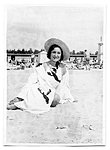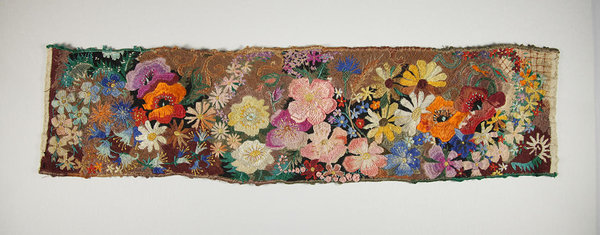2.03. - 5.05.2018
Biography of Leida Kibuvits
Leida Kuppits (Kibuvits) was born on 18 October 1907 at Kurepalu village near Tartu, where her father was the buffet keeper of the temperance society. Leida was the only child in the family, a talented and complicated child. The parents moved to the town of Tartu soon. The girl started school at the German-language A. Salomon private school and later at the Estonian-language Tartu Girls’ Gymnasium, and also studied for some time in Pallas Art School in 1921. Father’s death was a great shock for the 12-year-old Leida. Her teen years were shadowed by quarrels with mother and running away from home.
Having left the gymnasium and art school without graduating, Leida Kuppits started working as a typist. In 1931 she married Lieutenant August Kibuvits. The creative-minded young woman was not satisfied with the typist’s job. In 1932 she took part in the reputable novel writing contest organised by Looduse publishing house, and won it with her debut novel “Soomustüdruk”.
The 1930s were the happiest years in Leida Kibuvits’ life: she raised her daughter, was a freelance writer and a dazzling socialite, who often got media attention with her witty talk, as well as her extravagance and beauty.
However, her further life was twisted. The war broke out. Occupants came, one after the other. Husband August Kibuvits managed to escape to the West. Leida had to provide for her mother and daughter. Although Leida Kibuvits praised the new system in the Soviet period, she was still deported to Siberia due to the articles she had written during the German occupation. Her second husband, communist Leo Aisenstadt – who was of Jewish descent and whom in her own words she had married only because she needed some security in the difficult times – had already been arrested.
During the pre-arrest interrogations Leida Kibuvits never gave answers that could prejudice her colleagues-writers, although she was urged to. She was sentenced to 25 years of imprisonment; the sentence was reduced to four years after Stalin died, and the writer and public figure Aadu Hint took steps to release her.
When she returned to Tallinn from the prison camp, her health was ruined, but she was still able to cope and start writing again. However, recognition did not come as anticipated. Leida’s pampered daughter Kai, who had completed secondary education with a silver medal for distinction, preferred partying to university studies and was expelled from the university twice. She finally got educated as an accountant in Moscow. In 1964, Kai gave birth to son Kuljus, who was much loved by his grandmother. The three led an increasingly reclusive life in the Estonian Writers’ Union building in Harju street, Tallinn. Kai suffered from ever-deepening alcoholism, as did her mother.
Leida Kibuvits died on 5 December 1976.
Kai Kibuvits was found dead in the apartment in 1983. Having remained alone, Kuljus ended up in jail. He was evicted from the apartment due to debts, and died under obscure circumstances in 2002. He was buried by the municipality of Tallinn. Leida Kibuvits had no close relatives to take care of her legacy. Lennart-Hans Jürgenson, a poet from Viljandi, ordered the tombstone to the writer’s grave in Metsakalmistu cemetery.
%20(1)-1.jpg)


